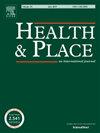Connecting place and nature-based traditional and spiritual practices among American Indian and First Nation youth
IF 3.8
2区 医学
Q1 PUBLIC, ENVIRONMENTAL & OCCUPATIONAL HEALTH
引用次数: 0
Abstract
Understanding the role of place in connection to Indigenous youth participation in nature-based traditional and spiritual activities (NBTSA) is of primary concern as exposure to both nature and culture collectively contribute to overall health and wellbeing. From oppressive historical Indian policies to contemporary barriers by way of climate change and increased use of technology, Indigenous youth continue to face risk of detaching from nature and losing pieces of their cultural identity. Qualitative and quantitative features of place in predicting NBTSA participation among Indigenous youth are not well understood and may offer key insights that connect youth to land, water and their cultures. Moreover, application of the Indigenous Traditional Ecological Knowledge (ITEK) theoretical model to inform the social sciences has largely been absent. In this study, we sought to investigate the role of place measured by residing in a sovereign Tribal or First Nation (qualitative) and increased presence of greenspace (quantitative) exposure on participation in NBTSAs among Indigenous youth. Our findings demonstrate that although increasing residential exposure to greenspace had a positive association, residing in a Tribal Nation was a stronger predictor for NBTSA participation. Applying an Indigenous methodology to research with Indigenous populations and communities allows us to move beyond general notions of what (e.g., greenspace) promotes human-nature interaction and, instead, identify place-based determinants. Namely, the ITEK framework guided our rationale to include Tribal Nations in our study. Sovereign Nations connect youth to traditional knowledge holders that share Indigenous knowledges and practices of the land and water through story and experiential learning.
Significance.
This study is one of the first to measure both qualitative and quantitative features of place that influence human-nature interaction among youth that collectively identify as Indigenous. Our research found that residing in a sovereign Tribal Nation is a stronger predictor than increasing exposure to greenspace for participating in land- and water-based traditional and spiritual practices providing evidence and public health implications for Indigenous determinants to health and wellbeing.
求助全文
约1分钟内获得全文
求助全文
来源期刊

Health & Place
PUBLIC, ENVIRONMENTAL & OCCUPATIONAL HEALTH-
CiteScore
7.70
自引率
6.20%
发文量
176
审稿时长
29 days
期刊介绍:
he journal is an interdisciplinary journal dedicated to the study of all aspects of health and health care in which place or location matters.
 求助内容:
求助内容: 应助结果提醒方式:
应助结果提醒方式:


